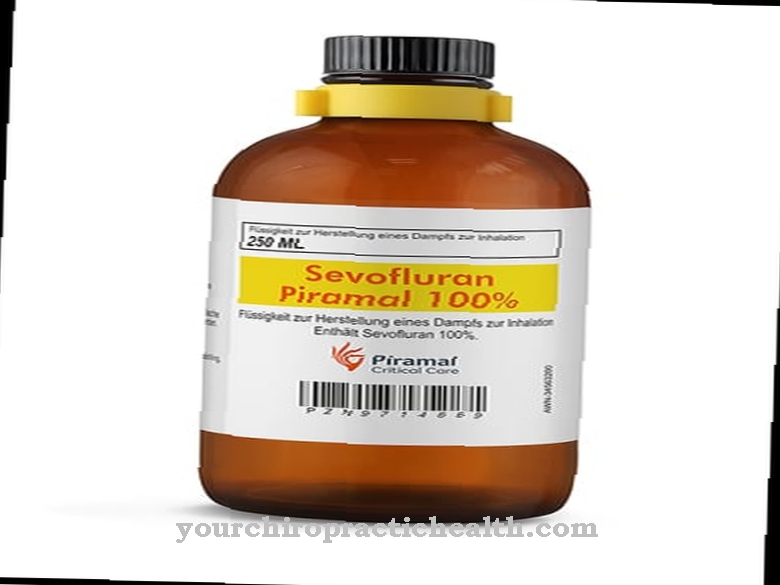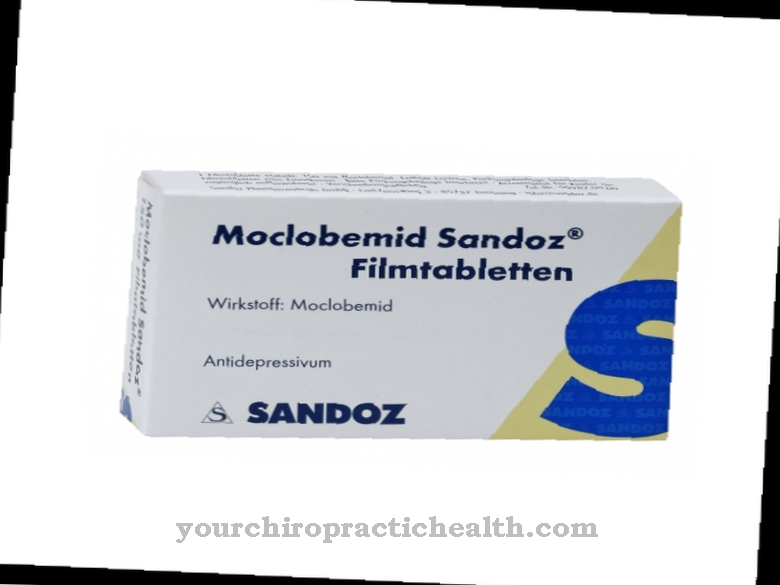Mycophenolate is an active ingredient that weakens the effect of the immune system. It is therefore mainly used to suppress the rejection reactions in organ transplants. However, many side effects must be expected when using it.
What is mycophenolate?

Mycophenolate is an immunosuppressive drug that is often used together with other drugs such as ciclosporin or corticoids in organ transplants. It is a complex chemical compound that intervenes in the nucleic acid metabolism.
The drug was developed by the American pharmaceutical company Synthex as mycophenolate mofetil. It was launched in the USA in 1995 under the name CellCept®. It was one of the first drugs to be approved in Europe through a central approval process for 15 countries. As a chemical compound, it is an almost white crystalline powder. It is insoluble in water. However, it does dissolve a little in absolute alcohol. The melting point of the active ingredient is 93 to 94 degrees Celsius.
Mycophenolate mofetil is a so-called prodrug. It is converted into the active substance mycophenolic acid in the body. This active ingredient is also commercially available as a sodium salt under the trade name Myfortic®. In this form, the drug is a water-soluble active ingredient. The sodium salt is also converted into the active form mycophenolic acid in the body.
Pharmacological effect
Mycophenolic acid (MPA) is an active ingredient that inhibits the enzyme inosine monophosphate dehydrogenase (IMPDH). Inosine monophosphate dehydrogenase is responsible for the synthesis of guanosine. Guanosine, in turn, is a basic building block of the nucleic acids DNA and RNA. It contains the important purine base guanine.
By inhibiting IMPDH, guanosine is no longer synthesized either. All processes that are dependent on nucleic acid formation are also suppressed. However, the inhibition of the enzyme is selective and reversible. So no other enzymes are inhibited and after stopping the drug the synthesis of guanosine takes place again immediately.
However, the selectivity also means that, in contrast to other immunosuppressants, the formation of B and T lymphocytes is increased and selectively inhibited. The immune cells, like no other cells, are dependent on the new synthesis of purine nucleotides because they multiply and their needs cannot be adequately met by the decay of old cells.
However, this new synthesis of purine bases, especially guanosine, fails completely here. Other body cells that do not multiply as quickly also have the option of using reprocessed purine bases from the breakdown of old nucleic acids. However, the immune system is largely dependent on the availability of a sufficient amount of nucleic acids, since it has to form a large number of immune cells. New T lymphocytes, B lymphocytes, natural killer cells or macrophages must constantly be available in order to ensure adequate immune protection for the organism.
However, these cells are also produced to carry out the rejection reactions after organ transplants. In this case, the immune system should be suppressed. However, the effectiveness of mycophenolate is so strong that it should actually only be used after organ transplants. Because the side effects are so serious that their use in autoimmune diseases would have rather negative consequences.
Medical application & use
As already mentioned, the main area of application for mycophenolate is in organ transplants. It is mainly used in kidney, liver or heart transplants. However, mycophenolate is always used together with ciclosporin and the corticosteroids to suppress the immune system.
Medication begins two days after the transplant by taking oral tablets. The effect is selective. Unlike some other immunosuppressants, the metabolite mycophenolic acid is not incorporated into DNA. Only the new synthesis of purine bases is suppressed. As a result, a normal immune reaction occurs immediately after the drug is discontinued. The effects of mycophenolate are very strong.However, this allows the drug to suppress the rejection reactions very well.
You can find your medication here
➔ Medicines to strengthen the defense and immune systemRisks & side effects
On the other hand, this strong immunosuppressive effect of mycophenolate causes severe side effects. The side effects are often serious and occur in large numbers. Common side effects include anemia, thrombocytopenia, nausea, vomiting, and diarrhea. The anemia is caused by the inhibition of blood formation due to the lack of nucleic acid synthesis.
In addition, the immunosuppressive treatment of frequent infections such as herpes simplex, herpes zoster, candidiasis or even sepsis is accompanied. There have even been reports of birth defects in newborn children whose mothers were treated with mycophenolate in combination with other immunosuppressants.
In a few cases, life-threatening progressive multifocal leukoencephalopathy (PML) also develops. PML is an infection of the central nervous system with polyomaviruses, which only people with a severe immune system can get. The disease progresses rapidly and leads to numerous neurological failures that can ultimately be fatal. As with the other immunosuppressants, there is also the possibility of skin cancer. It is therefore important not to expose yourself to UV rays from the sun during treatment.













.jpg)

.jpg)
.jpg)











.jpg)